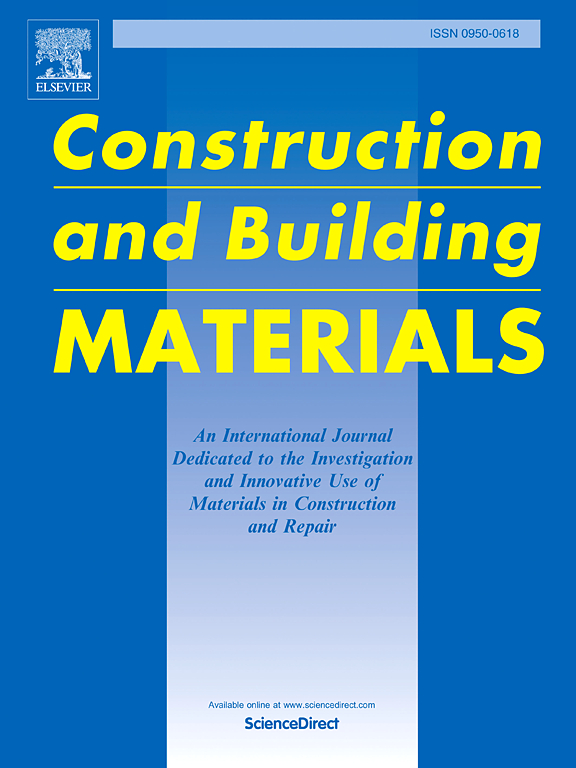AC impedance spectroscopy interpretation of the hydration behavior for cement mortar containing fly ash and nano-metakaolin
IF 7.4
1区 工程技术
Q1 CONSTRUCTION & BUILDING TECHNOLOGY
引用次数: 0
Abstract
The partial replacement of cement with fly ash (FA) has the potential to reduce industrial waste and carbon emissions. FA-cement systems exhibit lower strength during the early hydration period, which limits their applications. Nano-metakaolin (NMK) is known to enhance early strength, yet its effect on the hydration and microstructure development of FA cement systems remains unclear. This study utilizes the alternating current impedance spectroscopy (ACIS) method to investigate the hydration properties and microstructural evolution of NMK/FA cement mortar. The suitability of the ACIS method was validated through the use of TGA, XRD, and MIP tests. A suitable equivalent circuit model Rs(CPE1(Rct1W1))(CPE2(Rct2W2)) was determined to analyze the ACIS data. Furthermore, the relationships between strength and ACIS parameters of NMK/FA cement mortar were established. The results indicate that NMK promotes the formation of hydration products and refines the pores of FA cement paste, particularly during the 7–14 d. The ACIS observations are consistent with the conclusions derived from XRD and TGA. FA decreases the bulk resistance of cement mortar, whereas NMK significantly increases it, especially during the 7–14 d period. A synergistic pozzolanic reaction between NMK and FA occurs within the 7–14 d period, which is crucial for the long-term performance and durability of NMK/FA cement systems. When 5 % NMK is added to the cement paste with 30 % FA, the pores larger than 1 μm significantly decrease. Compared to FA30N0, the compressive strength of FA30N5 cement mortar increased by 12.9 %, 35.4 %, 20.0 %, and 8.3 % at 3, 7, 14, and 28 d, respectively. Furthermore, a logarithmic relationship exists between compressive and flexural strengths, the diffusion impedance coefficient and the bulk resistance of the NMK/FA cement mortar.
求助全文
约1分钟内获得全文
求助全文
来源期刊

Construction and Building Materials
工程技术-材料科学:综合
CiteScore
13.80
自引率
21.60%
发文量
3632
审稿时长
82 days
期刊介绍:
Construction and Building Materials offers an international platform for sharing innovative and original research and development in the realm of construction and building materials, along with their practical applications in new projects and repair practices. The journal publishes a diverse array of pioneering research and application papers, detailing laboratory investigations and, to a limited extent, numerical analyses or reports on full-scale projects. Multi-part papers are discouraged.
Additionally, Construction and Building Materials features comprehensive case studies and insightful review articles that contribute to new insights in the field. Our focus is on papers related to construction materials, excluding those on structural engineering, geotechnics, and unbound highway layers. Covered materials and technologies encompass cement, concrete reinforcement, bricks and mortars, additives, corrosion technology, ceramics, timber, steel, polymers, glass fibers, recycled materials, bamboo, rammed earth, non-conventional building materials, bituminous materials, and applications in railway materials.
 求助内容:
求助内容: 应助结果提醒方式:
应助结果提醒方式:


